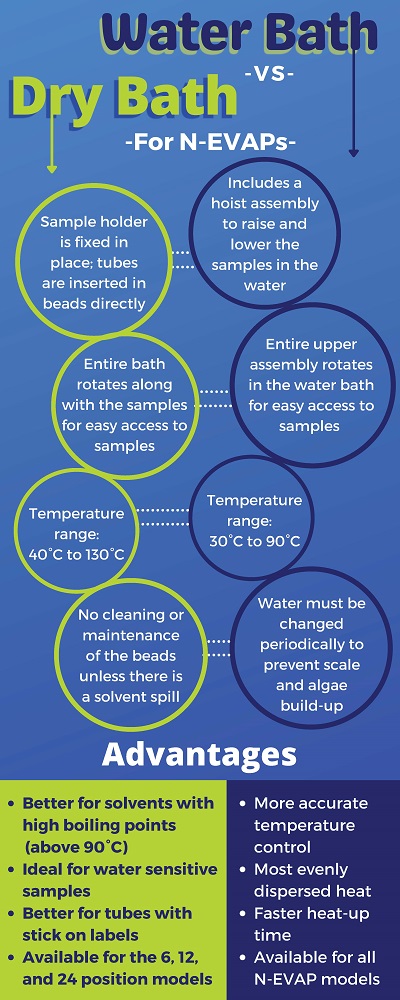
One of the most common questions we receive from customers is, “what is the difference between water and dry bath N-EVAPs”? There are a few key differences in the design, maintenance, temperature range, and specific advantages.
DESIGN:
The dry bath has a sample holder that stays fixed in place and the tubes are inserted directly into aluminum beads. The bath also rotates along with the samples for easy access to them. The water bath, on the other hand, has a hoist assembly that raises and lowers the samples into the water. The entire upper assembly rotates in the water bath for easy access to samples.
MAINTENANCE:
The dry bath requires no cleaning or maintenance of the beads unless there is a solvent spill, whereas the water in the water bath must be changed periodically to prevent scale and algae build-up.
TEMPERATURE RANGE:
The dry bath has a temperature range from 40°C to 130°C.
The water bath has a temperature range from 30°C to 90°C.
KEY ADVANTAGES:
We would recommend the dry bath to customers who are working with solvents with high boiling points (above 90 °C) such as heptane, toluene, or aqueous samples. The dry bath is also ideal for customers working with water sensitive samples or test tubes with stick on labels. We would recommend the water bath to customers who are looking for more accurate temperature control. The water bath has a faster heat-up time along with the most evenly dispersed heat.
*The dry bath is available for the 6, 12, and 24 position N-EVAP models*
*The water bath is available for all N-EVAP models*
If you'd like to learn more about Organomation's instruments or if you're not sure which model is best for your application, please contact a sales technician.
Learn about all the different N-EVAP bath options available:
